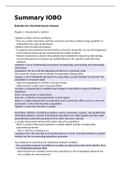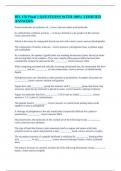Summary
Samenvatting IOBO: Statistics for the behavioral sciences
- Course
- Institution
- Book
This is a summary of the book Statistics for the behavioral sciences. Created for the first year IOBO course at administrative and organizational science in Utrecht. The summary includes H1 to 10, H12 and H15 to 17.
[Show more]













